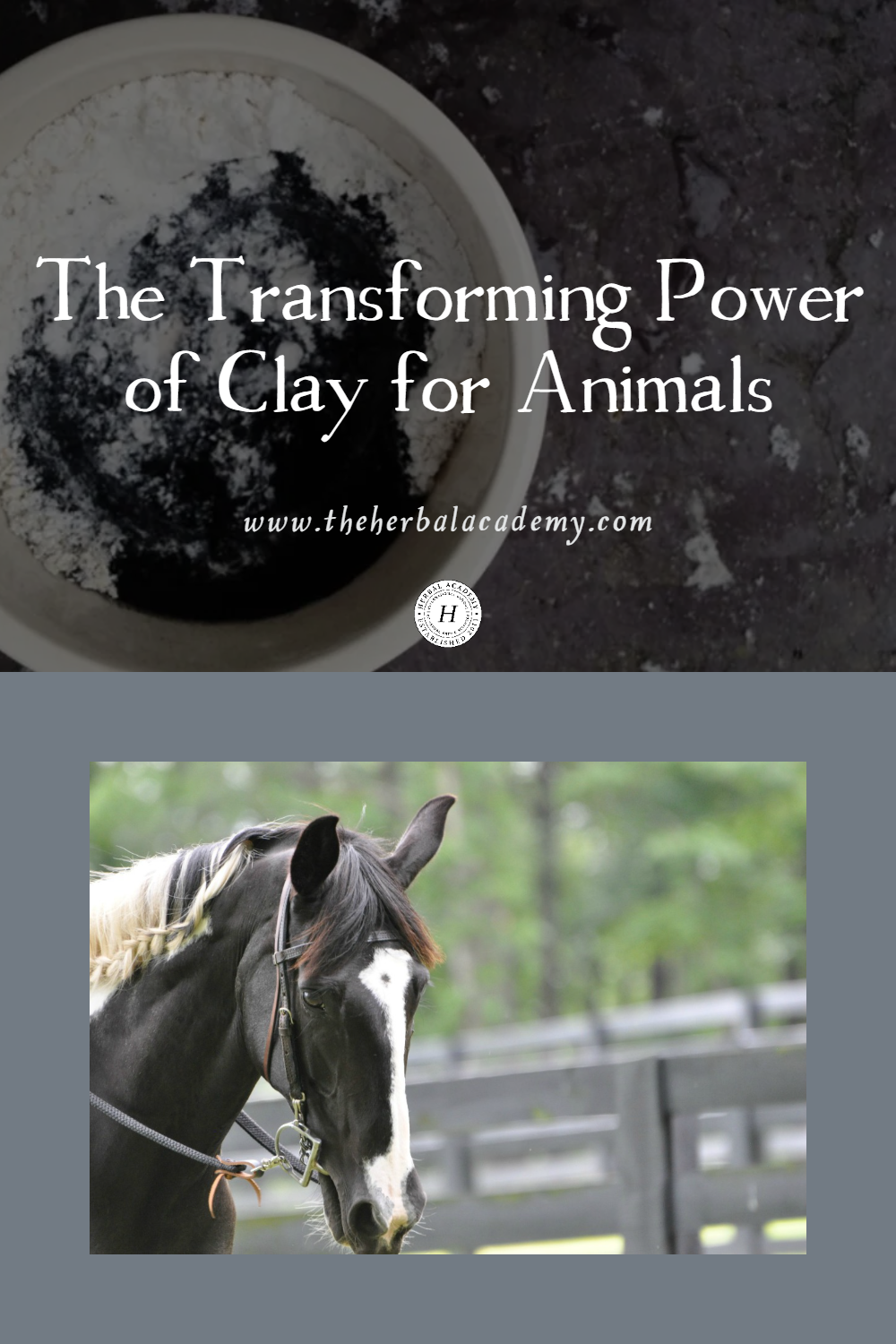
The Transforming Power of Clay for Animals
Clay has long proved a valuable companion to me. It taught me the art of baking delicious muddy pies that my mother would so kindly pretend to eat. It’s been a stronghold, protecting the lucky frog families I would rescue from all the princesses looking to kiss them. It provided essential camouflage in my valiant efforts to be a master spy, ambushing my poor mother as she worked in the yard. I guess it is only natural that I would one day look to rekindle its powerful soothing touch when my horse so needed support … the transforming power of clay for animals.
I grew up playing in the dirt. Not just any dirt but the deep, red clay of North Georgia. I can still remember the coolness it provided on a hot summer day. The way the clay dried on my skin, providing a road map that whispered the journey I’d had in its company—the beautiful hue of orange that lingered for days beyond my play date, beckoning my return.
We are all jars of clay, fragile and poor,
yet we carry within us an immense treasure…
-Pope Francis –
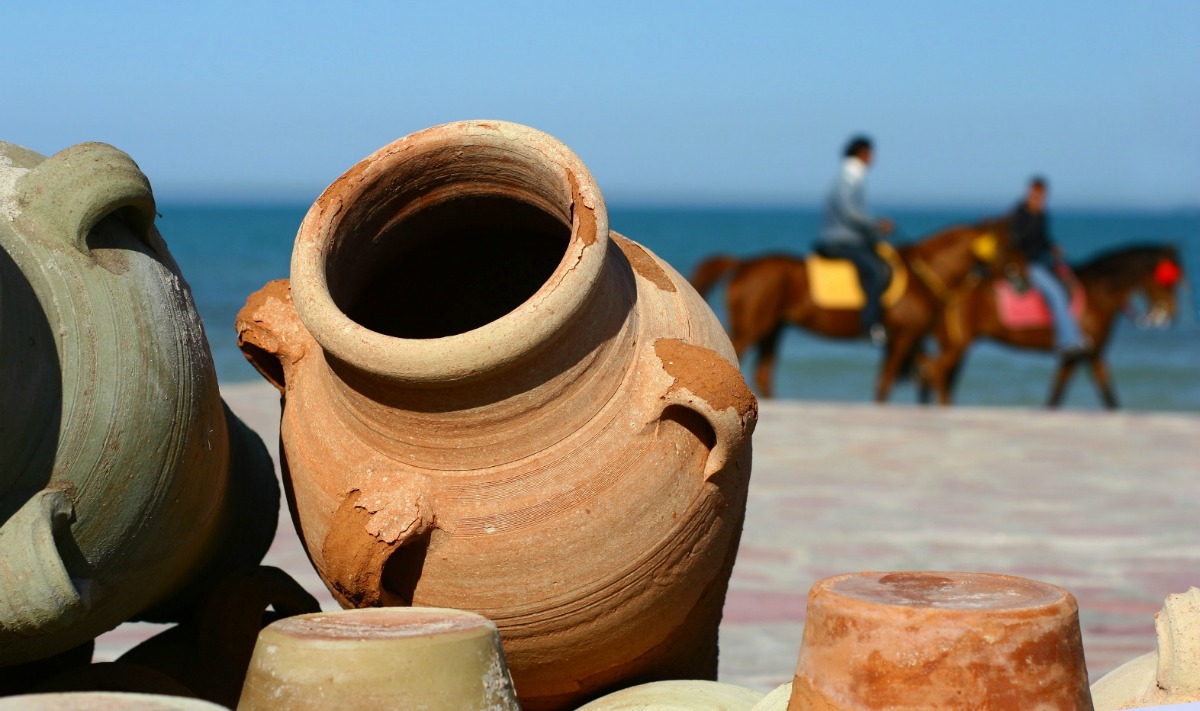
The Transforming Power Of Clay For Animals
Our mare, Cheyenne, suffers from sweet itch or summer seasonal recurrent dermatitis. This condition, common in horses in warmer climates, is usually due to a hypersensitivity to insect bites. It causes a horse to sometimes violently rub and scratch infected areas to the point of bleeding. This is most definitely the case with Cheyenne.
Due to this incessant scratching, she develops open sores in these tender areas. These wounds, in turn, attract more bugs to the area creating quite a vicious cycle. The sight of my poor Cheyenne reminds me this itch is definitely not “sweet.”
So, what to do with our “sweet” Cheyenne?
First and foremost, I begin an internal herbal supplement. However, herbs take time. I’ve found that for them to truly be of utmost external benefit, this particular skin condition should be anticipated. They are not going to lend immediate relief once the problem has festered. After a couple of years watching her suffer, I learned to begin this internal supplement in early summer before the problem occurs. Approaching the condition in this manner works wonders, but when we’re knee deep into those hot, steamy, summer months of Georgia, it only delays the inevitable.
When I’m properly supplementing to address sweet itch internally, yet still seeing it rear its ugly head (and it will), I turn to a topical approach.
This was the point I remembered that comforting clay of my youth.
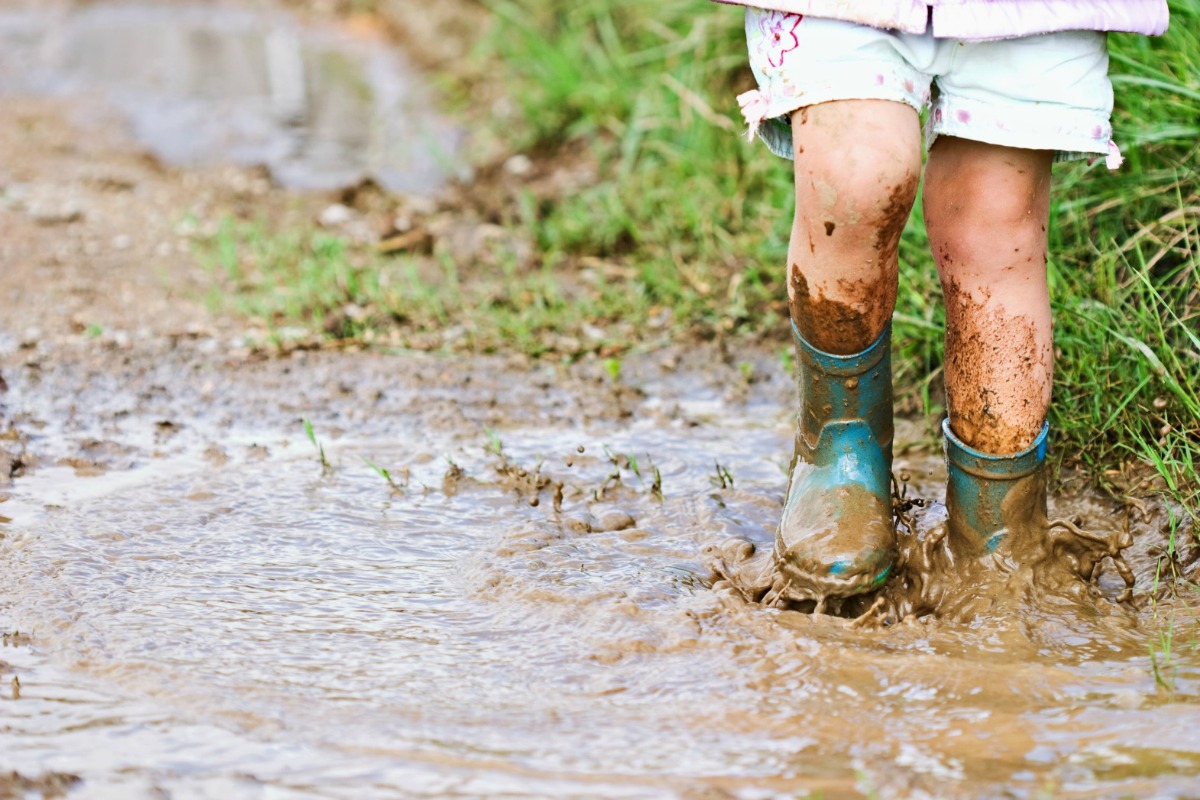
Creating An Herbal Clay For Animals That Soothes Hot, Itchy Skin
This DIY clay for animals remedy began with another lesson clay taught me in my youth.
I recall one day as I was playing, I got stung by a bee or wasp—I can’t say I remember—but what I do remember is my mother immediately scooping up a bit of moist, red clay. She grabbed my arm and smothered the sting with it. I don’t recall what my arm looked like later that day or even the next day, but what I do remember is the immediate cooling relief the clay provided to my hot arm.
Clay has longed been used to remove impurities from the body, with each type of clay used for their own unique benefit. The creamy gray of bentonite clay is no different and has been studied for its effects on bacteria and viruses (Clark, 1998; Haydel, 2008).
When mixing clay with liquids, I like to use apple cider vinegar and witch hazel as they each bring added benefits to the clay.
- The apple cider vinegar is thought to balance the skin’s pH, decrease inflammation, and discourage pathogens (Lukasik, 2003).
- The witch hazel helps tighten skin and is a potent anti-inflammatory.
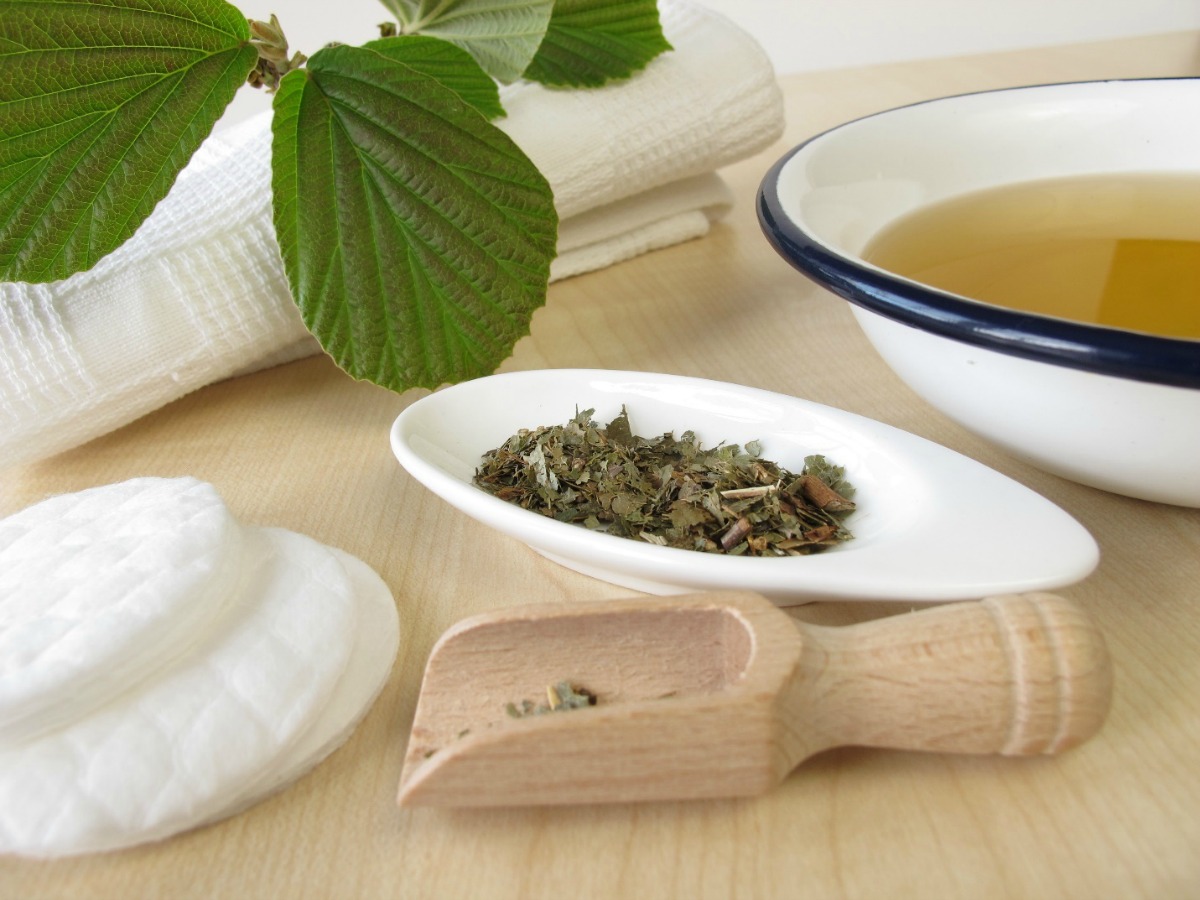
Just the word “oats” offers comfort. They have long been a go-to in the medicine chest for both my family and my animals. To these consoling grains, I add the fragrant, cooling, dried leaves of peppermint. Dried basil leaf is added to help relieve Cheyenne of the incessant itching. Lastly, I combine a mixture of essential oils I use in my homemade fly spray (Calendula, lemon, rosemary, peppermint, and sweet basil) to ensure Cheyenne doesn’t endure further suffering from hovering pests.
This Transforming Clay For Animals is not stained red like my fond memories nor is it found in the midst of my backyard, but Cheyenne and I began to feel, again, the consolation it so willingly and faithfully provides.
Clay has long been an integral part of my life—offering its supportive properties to mind, body, and spirit. Simply applying this clay mixture to Cheyenne’s skin reminds me of my youth as it dries and cracks upon my hands. Perhaps as you prepare this Transforming Clay For Animals, it will offer a little piece of yesterday for you as well.
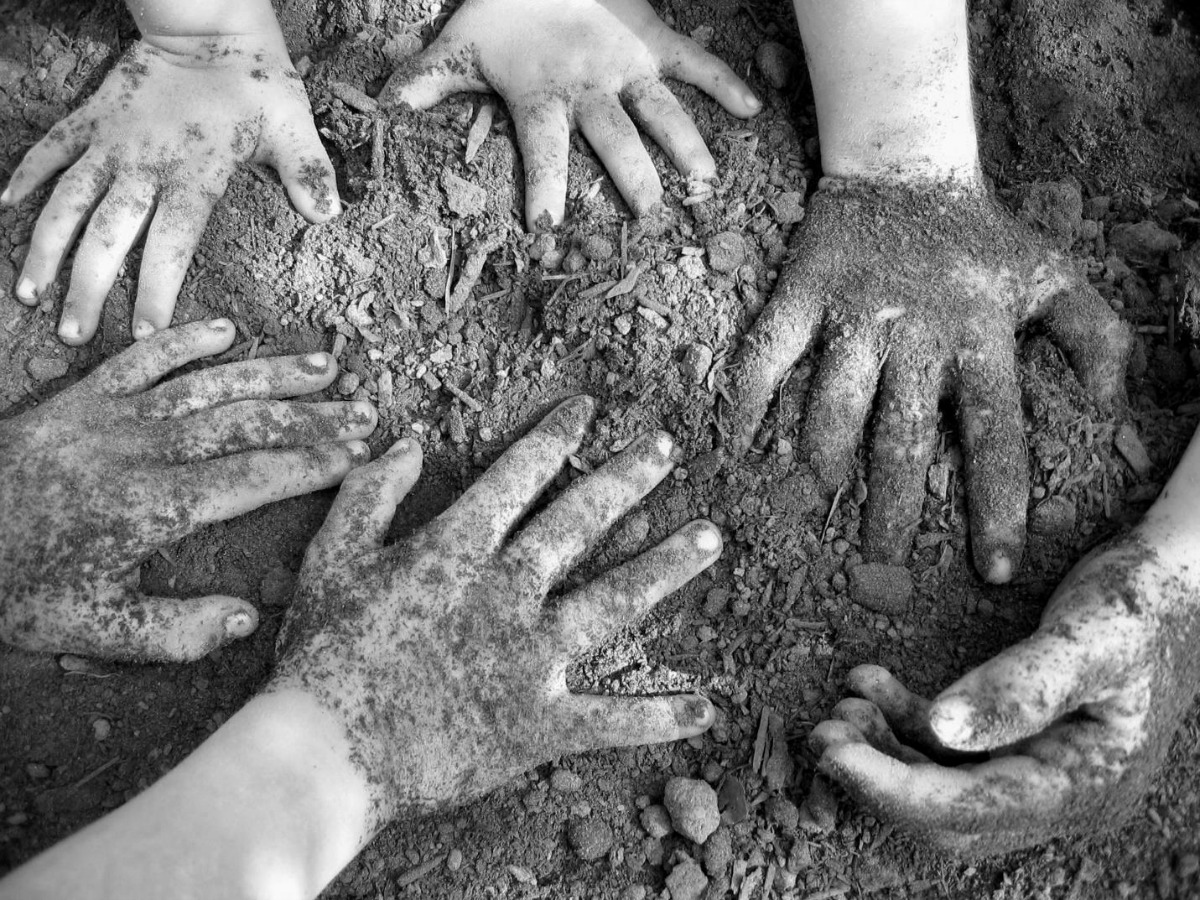
Makes approximately 1 lb. of product
4.8 ounces bentonite clay *As climates differ widely, you may need to add moisture to this Transforming Clay For Animals as needed. To further the properties, I like to use diluted apple cider vinegar to bring clay to consistency. Add small amounts (½ tablespoon at a time) until the clay is at a consistency to make applying easily. You want to be able to easily wipe across wound without it peeling back or falling off.
**Do not use any metal utensils or vessels when mixing or storing this Transforming Clay For Animals, as metal can affect the bentonite clay’s effectiveness.
The healing benefits of clay for animals reaches much deeper than what is written here, and I have utilized them for all of my animals, as well as my family for all sorts of insect bites, stings, and wounds. They never cease to provide that healing touch I remember from so long ago. I have included a few resources here, so you and your loved ones (furry and otherwise) can enjoy their restorative embrace.
Herbalism is for everyone – including your furry friends! Herbs can be a wonderful addition to your pet’s meal plan and first aid kit, and the best news is that they can be used safely and effectively to support your pet’s health.
Click Here to Download Your FREE Chart
REFERENCES
Clark, K. J., Sarr, A. B., Grant, P. G., Phillips, T. D., & Woode, G. N. (1998). In vitro studies on the use of clay, clay minerals and charcoal to adsorb bovine rotavirus and bovine coronavirus. Veterinary microbiology, 63(2), 137-146.
Haydel, S. E., Remenih, C. M., & Williams, L. B. (2008). Broad-spectrum in vitro antibacterial activities of clay minerals against antibiotic-susceptible and antibiotic-resistant bacterial pathogens. Journal of Antimicrobial Chemotherapy, 61(2), 353-361.
Lukasik, J., Bradley, M. L., Scott, T. M., Dea, M., Koo, A., Hsu, W. Y., … & Farrah, S. R. (2003). Reduction of poliovirus 1, bacteriophages, Salmonella Montevideo, and Escherichia coli O157: H7 on strawberries by physical and disinfectant washes. Journal of Food Protection, 66(2), 188-193.
Transforming Clay For Animals
4.8 ounces apple cider vinegar
3.2 ounces witch hazel
1.3 ounces rolled oats
¼ ounce dried peppermint leaf
¼ ounce dried basil leaf
1 mL – 1 ½ mL (20-30 drops) of essential oils (Calendula, lemon, rosemary, peppermint, and sweet basil)
There are many other herbal skills addressed in the Introductory Herbal Course in a way that allows you to develop confidence in making your own herbal preparations.
Download Our Free Herbs For Animals Chart!
